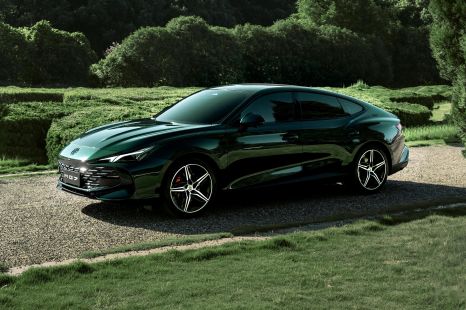

CarExpert.com.au
The new models the CarExpert team are most excited about in 2025
9 Months Ago
Ford Australia has detailed a number of changes to its Everest body-on-frame SUV range for models produced from March 2024.
Examples of the updated range will start reaching customers locally around mid-year. After “responding to customer preferences”, Ford is axing the Everest Trend RWD as part of this update. The Trend variant is still available in 4WD guise however.
The Everest Wildtrak variant is also disappearing, although it was only a special edition to begin with.
Pricing for the rest of the Ford Everest line-up remains unchanged. The range opens at $53,990 before on-roads for the Ambiente RWD, and extends to $79,490 before on-roads for the flagship Platinum.
The seven-seat Ford Everest is on hand to offer all the same off-road capability as the Ranger in a body with space for seven.
As with the Ranger on which it is based, it packs a tougher new look on the outside and its interior is brimming with the sort of technology that would once have been unimaginable in a car with commercial roots.
There’s V6 turbo-diesel power now for people who want more grunt, and a refined take on the existing 2.0-litre Bi-Turbo diesel for those who don’t.
Ford is casting the net wide with the new Everest. At the bottom end of the range, it needs to take on more budget-oriented body-on-frame four-wheel drives like the Mitsubishi Pajero Sport.
Mid-range models are aimed at the ever-popular Isuzu MU-X, while the range-topping Platinum lines up neatly with the popular but ageing Toyota LandCruiser Prado.
That’s no small ask. Is the Everest up to the task, or does it have a mountain to climb?
Quickly see how this car stacks up against its competition. Select any benchmark to see more details.
Where expert car reviews meet expert car buying – CarExpert gives you trusted advice, personalised service and real savings on your next new car.
| Configuration | Price From* |
|---|---|
| 2.0L, 10-speed auto, 5-door SUV, Diesel, RWD | $54,240 |
| 2.0L, 10-speed auto, 5-door SUV, Diesel, 4x4 | $59,240 |
| 2.0L, 10-speed auto, 5-door SUV, Diesel, RWD | $53,490 |
| 2.0L, 10-speed auto, 5-door SUV, Diesel, RWD | $53,990 |
| 2.0L, 10-speed auto, 5-door SUV, Diesel, 4x4 | $58,490 |
| 2.0L, 10-speed auto, 5-door SUV, Diesel, 4x4 | $58,990 |
| Configuration | Price From* |
|---|---|
| 2.0L, 10-speed auto, 5-door SUV, Diesel, RWD | $63,740 |
| 3.0L, 10-speed auto, 5-door SUV, Diesel, 4x4 | $73,740 |
| 2.0L, 10-speed auto, 5-door SUV, Diesel, RWD | $62,990 |
| 2.0L, 10-speed auto, 5-door SUV, Diesel, RWD | $63,490 |
| 3.0L, 10-speed auto, 5-door SUV, Diesel, 4x4 | $70,590 |
| 3.0L, 10-speed auto, 5-door SUV, Diesel, 4x4 | $72,490 |
| Configuration | Price From* |
|---|---|
| 2.0L, 10-speed auto, 5-door SUV, Diesel, 4x4 | $67,040 |
| 2.0L, 10-speed auto, 5-door SUV, Diesel, 4x4 | $65,990 |
| 2.0L, 10-speed auto, 5-door SUV, Diesel, 4x4 | $66,790 |
| 2.0L, 10-speed auto, 5-door SUV, Diesel, RWD | $60,990 |
| 2.0L, 10-speed auto, 5-door SUV, Diesel, RWD | $61,490 |
| Configuration | Price From* |
|---|---|
| 3.0L, 10-speed auto, 5-door SUV, Diesel, 4x4 | $73,090 |
| 3.0L, 10-speed auto, 5-door SUV, Diesel, 4x4 | $72,803 |
| 3.0L, 10-speed auto, 5-door SUV, Diesel, 4x4 | $74,704 |
| Configuration | Price From* |
|---|---|
| 3.0L, 10-speed auto, 5-door SUV, Diesel, 4x4 | $81,115 |
| 3.0L, 10-speed auto, 5-door SUV, Diesel, 4x4 | $78,530 |
| 3.0L, 10-speed auto, 5-door SUV, Diesel, 4x4 | $76,999 |
| 3.0L, 10-speed auto, 5-door SUV, Diesel, 4x4 | $79,490 |
Where expert car reviews meet expert car buying – CarExpert gives you trusted advice, personalised service and real savings on your next new car.
See our comprehensive details for the Ford Everest
Behind the third row, there’s 259L of cargo space, expanding to 898L with it folded and 1823L with the second row folded. With all three rows up, you can fit either two duffel bags or perhaps one suitcase, depending on its size.
Where expert car reviews meet expert car buying – CarExpert gives you trusted advice, personalised service and real savings on your next new car.
CarExpert High Resolution Photos of the Ford Everest
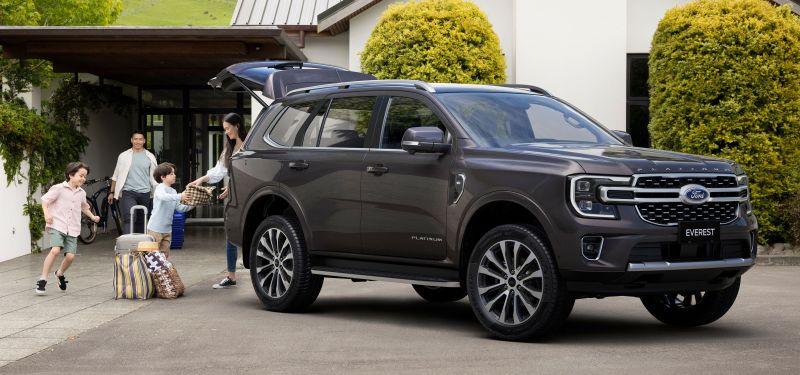
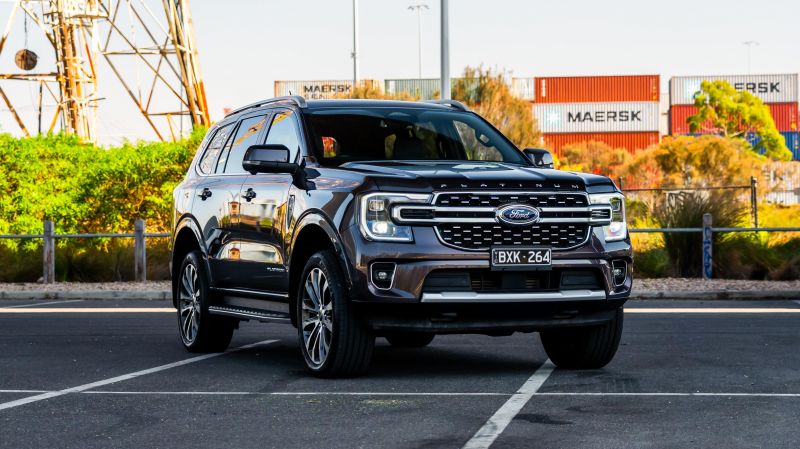
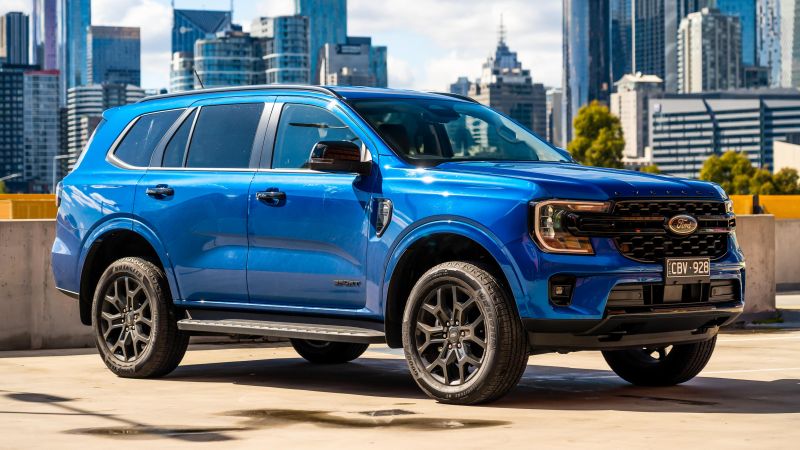
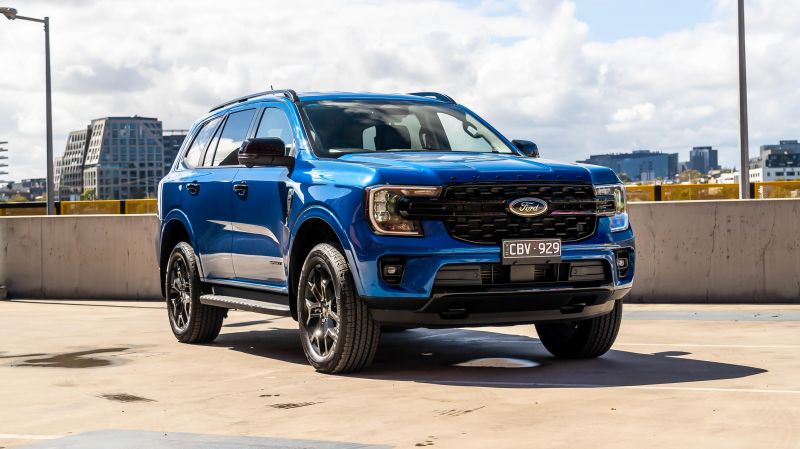
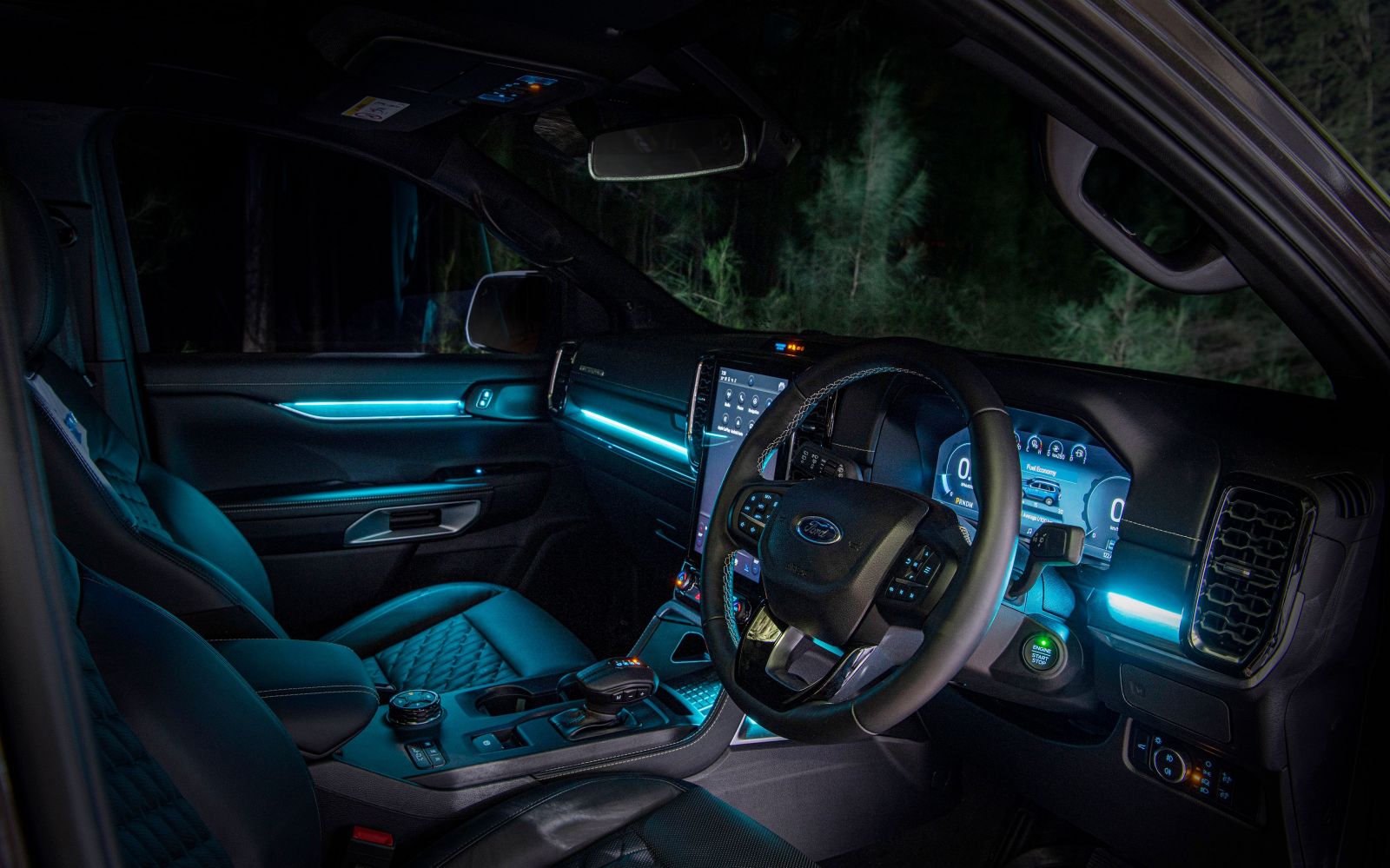
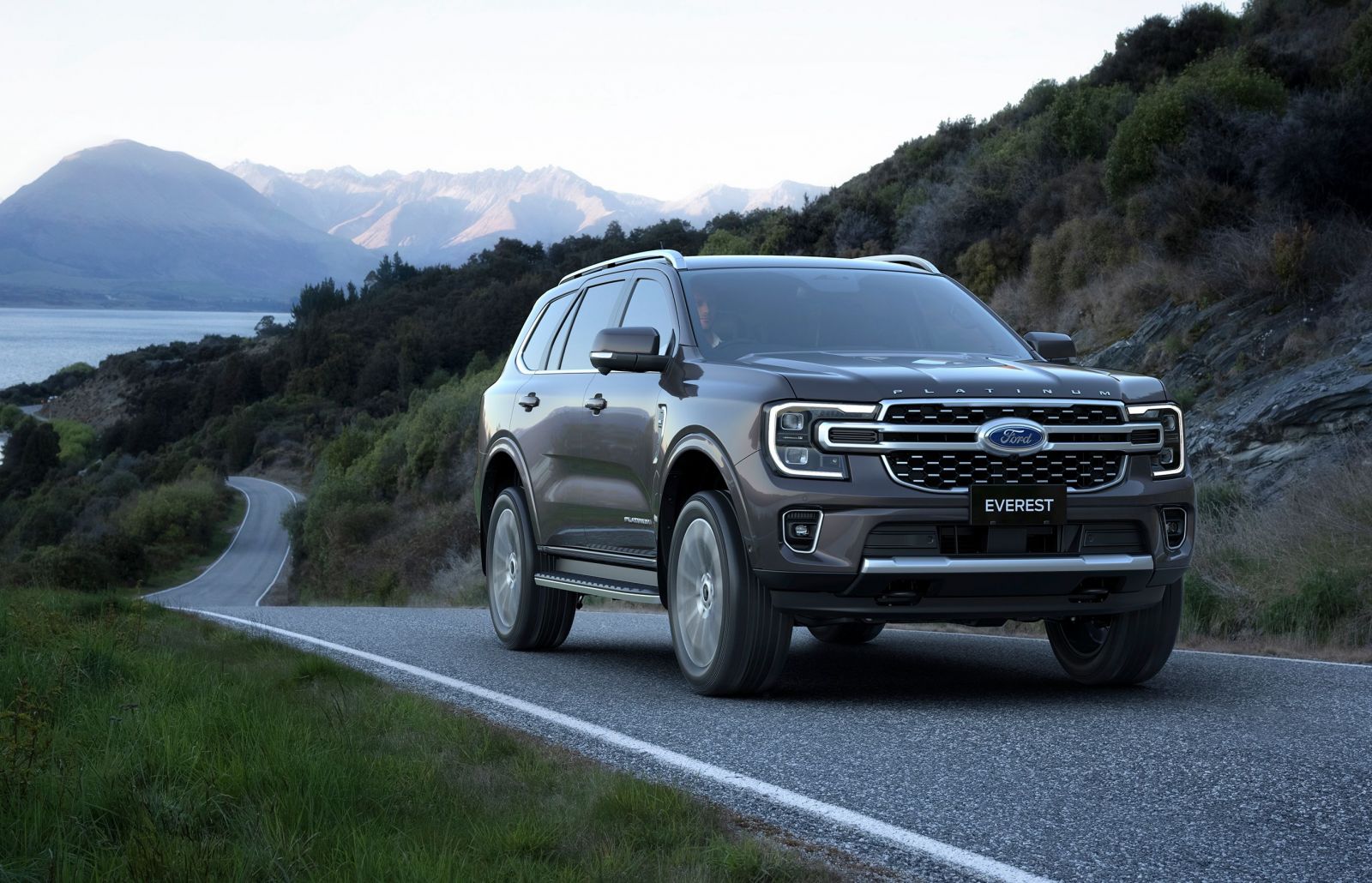
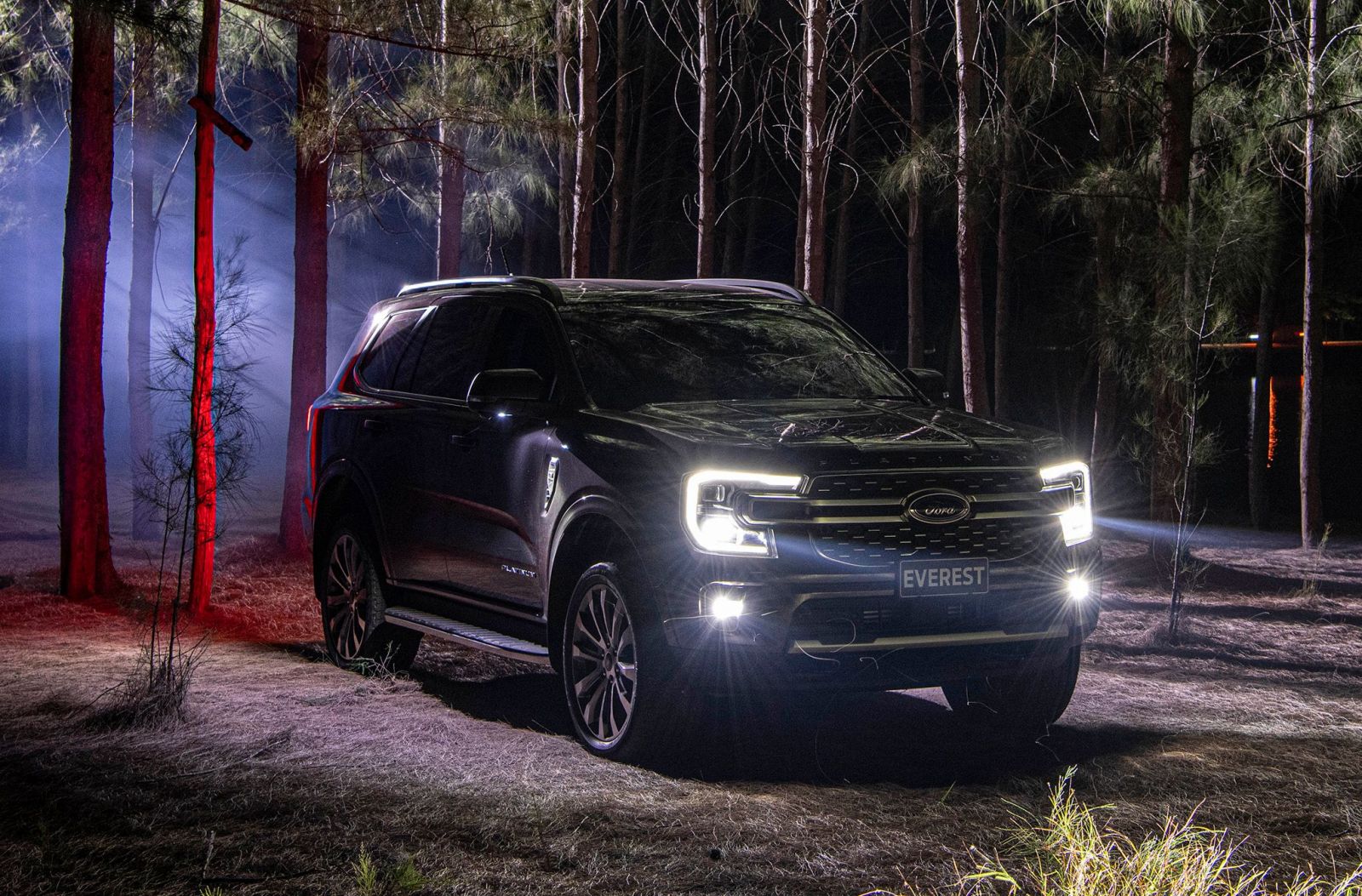
View 7 images
From the firewall forward, the Everest is identifiable as being Ranger-based, while its wider stance and more angular bodywork and detailing give it a more purposeful look.
“Everest is, and always will be a super cable vehicle… but probably the previous generation, particularly the exterior didn’t really deliver on the promise of the capability of the sort of chassis that’s underneath,” said Max Wolff, designer director for Ford in China and the International Market Group (IMG).
The bluff front end with its C-clamp lighting signatures arguably works well with the boxier body of the new car, with Ford employing a stronger shoulder line while also squaring off the rear end to improve luggage space.
The Platinum exclusively offers matrix LED headlights with speed-dependent lighting and both static and dynamic bending capability. The top-spec Everest is also differentiated by a unique grille, black roof, and 21-inch alloy wheels, but the changes aren’t limited to the exterior.


Inside, the Platinum exclusively offers quilted leather upholstery, ambient lighting and a panoramic sunroof. All models feature a Sync 4A infotainment system with wireless Android Auto and Apple CarPlay.
All bar the Ambiente use a 12-inch portrait-oriented touchscreen infotainment system, with the base model using a 10.1-inch.
All Everest models have been “significantly upgraded from a soft trim perspective”, according to Wolff. Ford says it’s worked to make the Everest more comfortable for longer journeys, with engineers also looking at the mirrors, door seals and even brakes to make the cabin quieter.
The company says it’s maximised the packaging for the largely identical external footprint, with more elbow, leg and shoulder room for those in the front and back. It also says the Platinum with its panoramic roof has more headroom than the old Titanium, which also featured a panoramic roof.
The sliding second row split/folds 60:40, with the third row featuring a 50/50 split. Both rows have been designed to fold flat. Ford has increased the size of the rear window and changed the angle of the rear glass to provide third-row occupants with more light. The third row also has more shoulder room and functional storage, while Ford says it’s also easier to get in and out of. Platinum models also feature power-folding capability for this row.
There’s an underfloor storage area, while Ford has installed a small lip for the load area, which it calls an ‘apple catcher’, to prevent items from rolling out when you open the tailgate. Ford says female customers were included in the development process. “I think the interior is a clear area of evidence in terms of the customer feedback from our female customers,” said T6 program manager Pritika Maharaj.
“Things like design lighting, the IP, the [dash-mounted, pop-out] cupholders in the instrument panel, there’s lots of features that I think are very much in response to what female customers have asked and said is important to them.”

Although not everyone will love the upright design and utilitarian plastics, the Everest runs the same class-leading infotainment setup as its ute sibling across the range. The base Ambiente features a 10-inch vertical display, while the Trend and up get a 12-inch display running the latest Sync 4 software.
The software looks and feels very modern, and Ford has retained some physical buttons for frequently-used climate functions, so it’s easy to fiddle with the temperature on the move.
The menu structure is logical, and the sheer amount of screen real estate means key information isn’t buried. It’s possible to have your mapping, radio preferences, and climate information on display all at once, for example.
Wireless Apple CarPlay connected flawlessly for us, although it drains the battery rapidly with no wireless charger.
A bit more processing power still wouldn’t go astray though; the screen sometimes lags when you’re hopping between functions.
Most of the range shares its digital instrument cluster with the Ranger. It’s a simple, effective unit, but it’s not quite as flashy as the 12.4-inch unit standard in the Platinum.
Although it still won’t show you maps, it allows a greater range of displays and features more polished graphics than the rest of the range.
The Ford Everest earned a five-star rating on the back of an 86 per cent score for adult occupant protection, a 93 per cent score for child occupant protection, a 74 per cent score for vulnerable road user protection, and an 86 per cent safety assist score.
The five-star rating applies to the whole Everest range, and is based on tests carried out on the closely related Ford Ranger ute. For owners of cars built before August 20, 2022, that rating only applies once a software update has been installed by a dealer.
The 2024 Ford Everest comes with the following standard safety equipment:
The whole range features an 80L fuel tank, although aftermarket specialist ARB offers a long-range unit as well.
As with the Ranger, Ford has also left space under the bonnet for a second battery to power aftermarket accessories.
| Ford Everest | Fuel Type | Combined |
|---|---|---|
| 2.0L, 10-speed auto, 5-door SUV, Diesel, RWD | Diesel | 7.1 L/100km |
| 2.0L, 10-speed auto, 5-door SUV, Diesel, 4x4 | Diesel | 7.2 L/100km |
What are the running and servicing costs of a Ford Everest?
Maintenance is required every 12 months or 15,000 kilometres, and the first five services are each priced at $379 under the Blue Oval’s capped-price service program – $50 higher per service than in pre-MY24 vehicles.
Our expert take on Ford Everest drivability.
The last Everest did a good job hiding its ute-based origins, but the new one is a step (or two) better again.
Ford has added extra sound deadening under the body, and tweaked the ladder frame relative to the Ranger to reflect the fact this is a less-rugged, more family-oriented vehicle. Of course, it also has a different wheelbase to the Ranger, and rides on a coil-sprung rear suspension with a Watt’s Link instead of leaf springs.
Ride quality is impressive across the range. At lower speeds, you don’t feel small, high-frequency bumps shuddering through the frame like you often do in ute-based four-wheel drives, and at high speeds it feels impressively tied-down.
Although it’s not quite on par with a monocoque crossover for refinement, the truck-like nature that has traditionally characterised off-road capable family haulers has been buried under layers of cotton wool here.
The new Ford Everest is available with two turbo-diesel engines. The entry-level option is a 2.0-litre Bi-Turbo four-cylinder, mated with either rear-wheel drive or full-time-capable four-wheel drive.
It’s offered on the Ambiente and Trend, and is shared with the closely-related Ranger ute. Compared to the equivalent engine in the last Everest, it features new injectors, cooling fans, a new engine cover, new seals, and a host of calibration changes.
Peak power is 154kW, and peak torque is 500Nm. It’s mated to a 10-speed automatic transmission as standard, and drive is sent to all four wheels through a full-time four-wheel drive system – except in 4×2 models, which are rear-wheel drive.
Standard on the Sport and Platinum is a 3.0-litre V6 turbo-diesel engine, producing 184kW and 600Nm. It’s also mated to a 10-speed automatic transmission, with drive sent exclusively through a full-time four-wheel drive system.
The Everest glided through our off-road course. It has 226mm of ground clearance in Sport trim, with a wading depth of 800mm.
Approach, departure and breakover angles are 30.2, 25 and 21.9 degrees, respectively, and there’s a locking rear differential for rougher stuff. Also standard is a well-calibrated hill descent control.
The Everest features a full-time four-wheel drive system with a two-speed electromechanical transfer case featuring 2H, 4H and 4L modes, plus a 4A mode for high-traction surfaces like paved roads.
This 4A mode when selected can continuously distribute power between the front and rear axles for “optimum performance in all on-road conditions”. Essentially, it behaves like an all-wheel drive car in 4A.
There’s also an electronic locking rear differential on four-wheel drive models that can be activated through the infotainment touchscreen.
All 4×4 variants of the Everest also receive an e-shifter gear selector instead of a traditional mechanical gear selector.
Depending on the Everest variant, there are a variety of drive modes that change the vehicle’s throttle response, gearshifts, traction control and ABS. These include the following:
Standard on all 4×4 models besides the entry-level Ambiente is an ‘Off-Road Screen’ (ORS) that’s able to display the following information:
A surround-view camera, which is standard on the top-of-the range Platinum and optional on the Trend 4×4 and Sport, can also be interacted with in this ORS.
What colours are available for the Ford Everest
The 2024 Ford Everest is available in the following exterior paint colours:
All paint colours except for Arctic White are prestige paint colours and cost an additional $700.
The Everest is backed by a five-year, unlimited-kilometre warranty like the wider Ford range.
Maintenance is required every 12 months or 15,000 kilometres.
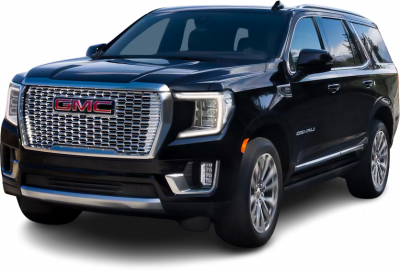
Yukon
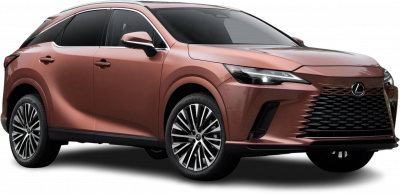
RX
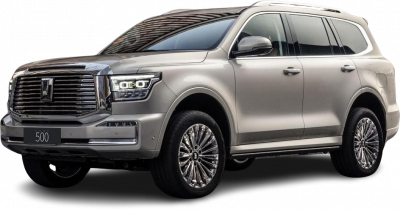
Tank 500
Deals available
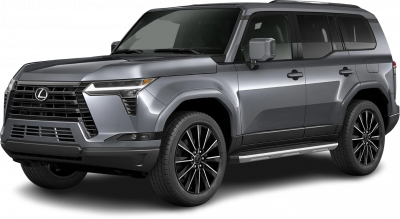
GX
X5
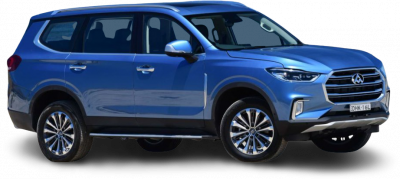
D90
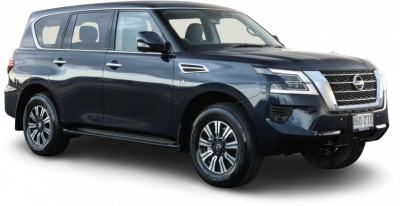
Patrol
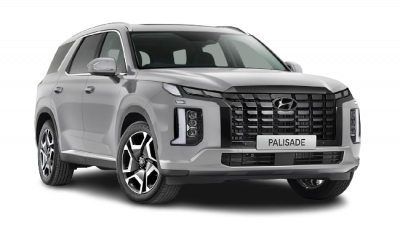
Palisade
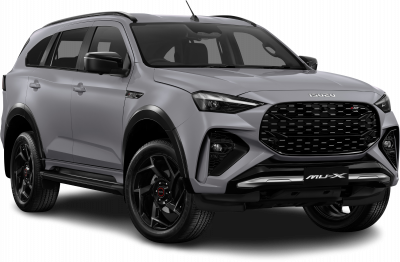
MU-X
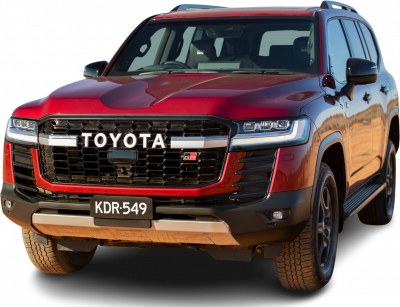
LandCruiser
Can’t see the car you’re considering?
Is this the right car for you? Out experts buy or not guide.
You could argue the base Ambiente is all the Everest anyone needs, which shows how solid the foundations are.
Although the Sport offers a compelling blend of luxuries and value, the Platinum is the model that delivers on Ford’s promise to take the Everest into a space it hasn’t previously occupied.
It’s easily the most polished four-wheel drive of its kind; one which should make a few folks at Toyota very nervous.
Where expert car reviews meet expert car buying – CarExpert gives you trusted advice, personalised service and real savings on your next new car.
The cheapest Ford Everest is the Ambiente that starts from $53,490.
The most expensive Ford Everest is the Platinum that starts from $81,115.
The best towing capacity of a Ford Everest is 3500 kg offered by the following variants: Ambiente, Trend, Sport, Wildtrak and Platinum.
The largest Ford Everest is the Ambiente which measures 1923mm wide, 4914mm in length and sits 1842mm tall.
The most powerful Ford Everest is the Sport which has 184kW of power from its 3.0L TURBO DIESEL COMMON RAIL engine.
The Ford Everest is built in Thailand and shipped to Australia.
The heaviest Ford Everest is the Sport which weighs 3150 kg (kerb weight).
The Ford Everest uses diesel.